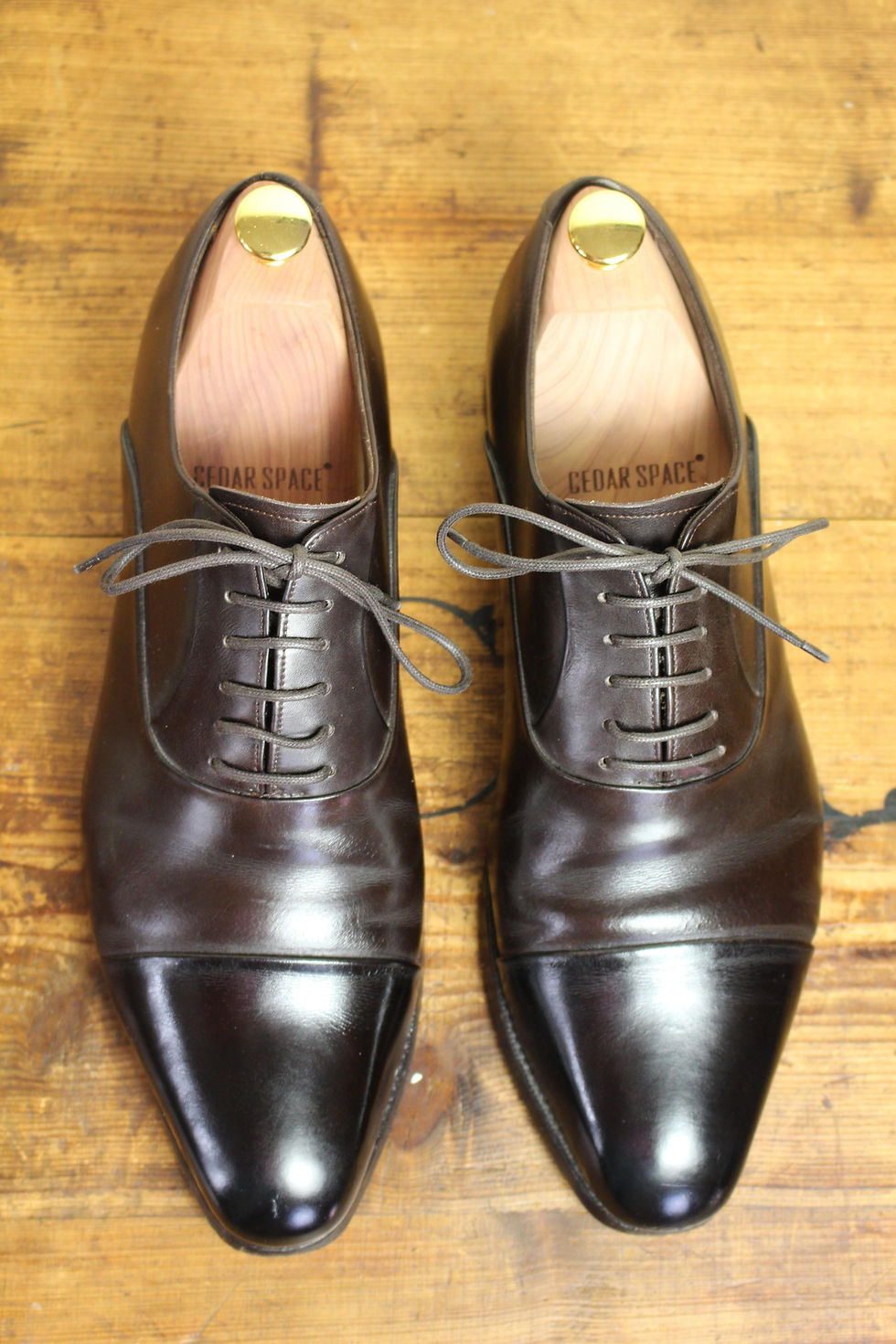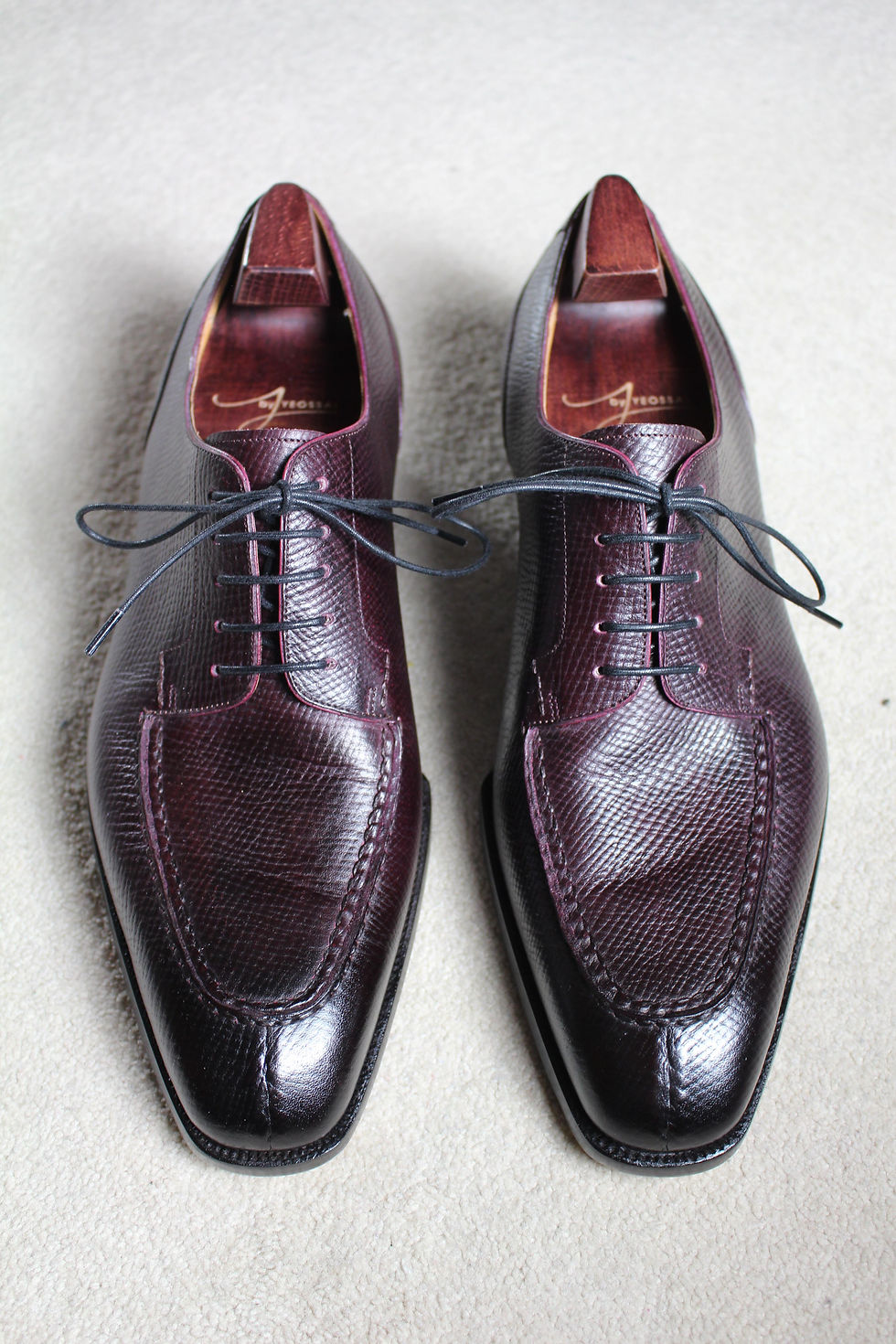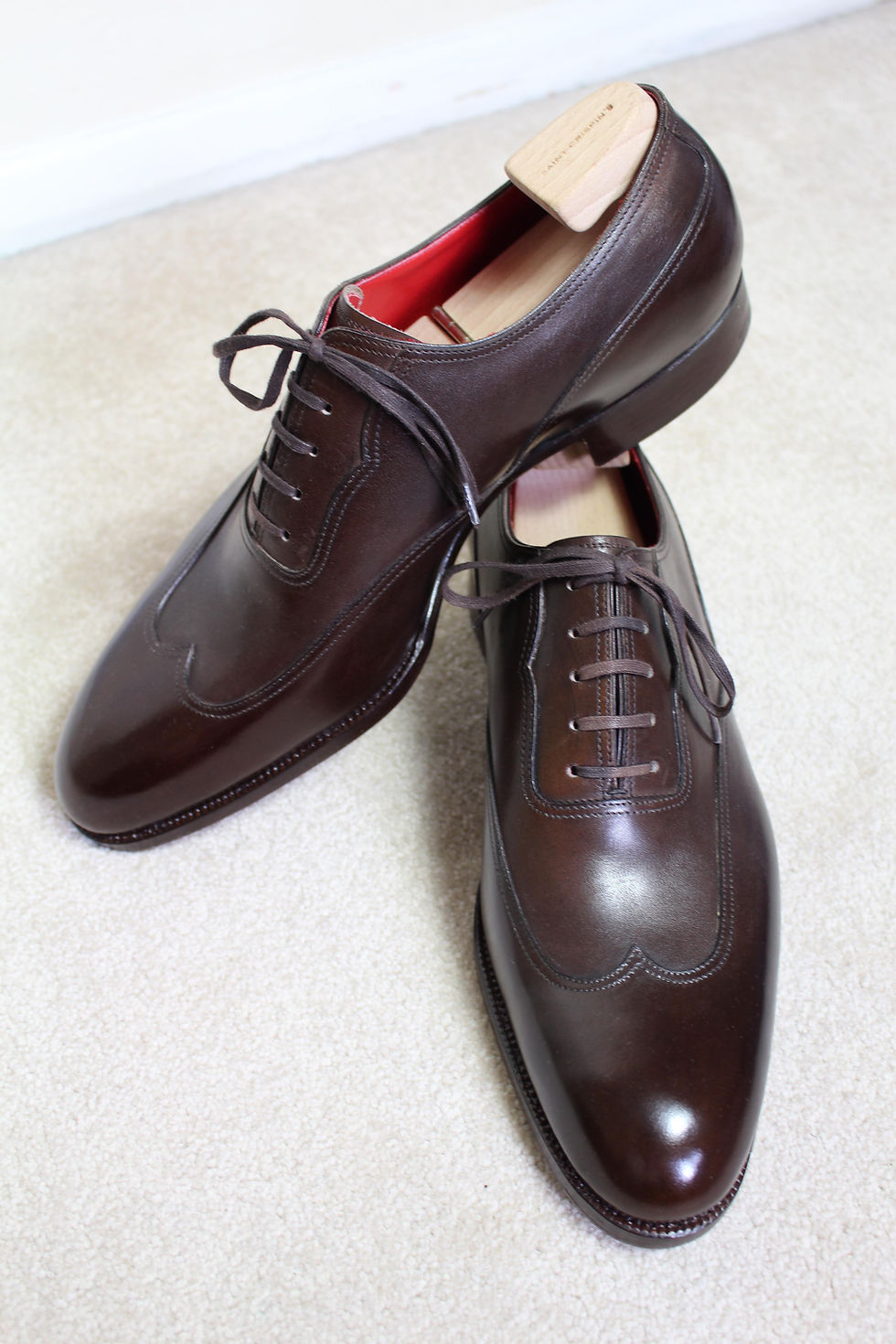What is a Handwelted Shoe (and is it worth the money?)
- Sam
- Feb 9, 2021
- 4 min read
Updated: Apr 29, 2021

Hand-whatted shoes?
In hand-welted (HW) shoes, the upper, insole and welt are stitched together by hand via one seam. Is it a time and skill-intensive process - the Goodyear-welted (GYW) process is far more economical and efficient as part of mass production lines, and is thus ever more widespread compared to HW, particularly since the end results of the two methods are effectively visually indistinguishable.
As for the confusion with saying "handmade" - it doesn't mean that no machine is used at all in production. Stitching found on uppers, for example, will almost always use a sewing machine except for exhibition shoes or extremely specific bespoke. It's faster and the end results tend to be more consistent than hand-stitching. That's without getting into the notion that a lot of the time machines are still hand-operated...
Who are the main makers?
A quick breakdown of the main "relatively possible to obtain without jumping through hoops" brands, mostly European, from least to most expensive.
I'm going to stop at MTO / RTW, but you'd also expect bespoke makers to make use of HW construction (like John Lobb St. James, Cleverley, Foster & Son) . Note that some of these makers may only have smaller HW collections as part of a wider GYW assortment, like Meermin:
Entry: Meermin, Archibald London
Mid: Vass, Enzo Bonafe, Yeossal, Zonkey Boot
High: Paolo Scafora, Meccariello, Saint Crispin's, Stefano Bemer

How do HW shoes compare with Goodyear welted shoes?
HW shoes tend to cost more than GYW shoes because they are more time and skill-intensive to produce. The three main arguments in favour of GW over GYW shoes are here, and addressed in more detail below:
1) The preservation of craft in shoemaking - this is fair, but hard to quantify and a bit of a rabbit-hole topic
2) Since HW shoes don't need a packed layer of cork to fill the welt cavity, they are lighter
3) With less need for cork you can have a thicker insole piece in a HW shoe - the difference in construction makes them more flexible and therefore more comfortable

1) Keeping the craft alive
The Styleforum thread I linked to earlier on goes into extensive detail on this topic. Economically, we know that all industries change as efficiencies become available, and this is a prime example. There is essentially nothing visibly different between a GYW and HW shoe, and yet they cost a lot more time to make with much more specialised techniques.
Additionally, I'm not really in a position to say I'm supporting the craft here, as I bought these from a reseller. I'd certainly hope to buy more directly from St C's in the future, especially with the tantalising lure of a personally modified last.
2) Are Hand welted shoes lighter than Goodyear welted shoes?
For this I weighed a single shoe from each of the following pairs:
So perhaps a noticeable difference with the shell Crockett & Jones, but not compared with the other pairs. It seems that upper materials and your sole choice will have more effect on weight.
3) Are Hand welted shoes more flexible than Goodyear welted shoes?
To test this, I used the scales from before, and placed the heel of each shoe flat on a table, with the toe projecting over the edge.
With one hand firmly in the heel, I pushed up with the scale to see how much weight was needed to push the toe up by 30 degrees.
Saint Crispin's (HW, new) - 3.5kg
Meermin Linea Maestro (HW, very well worn - 2kg
Crockett & Jones Audley (GYW, new) - 3.5kg
Gaziano & Girling Hayes (GYW, new) - 4kg
Herring Wholecuts (GYW, very well worn - 1.8kg
J. Fitzpatrick (GYW, well worn) - 2.5kg
Crockett & Jones Shell (GYW, very well worn) - 5kg +
So while far from scientific, it looks like the rigidity of the upper materials and the amount of upper and sole wear are much more influential in the flexibility. More flexibility seems to come with wear over time for both construction methods. I'd be very open to input from people with lots of well-worn pairs to compare from, though.
Overall I'd compare the benefit of HW shoes to buying a mechanical watch over a quartz one. An externally similar end product, but one which might bring you as the owner - and presumably a bit of an enthusiast - some specific, hard-to-define sense of satisfaction that's a key component of any hobby.

In conclusion
While you can clearly get excellent looking and feeling GYW shoes, the fact that HW makers care so much about their craft that they still insist on HW bodes well for the overall quality of their output. Maybe we could say it's a correlation rather than causation between them being great shoes and being hand welted shoes. Or in other words - they are great shoemakers who use hand welted methods, rather than because they use hand welted methods.




Comments